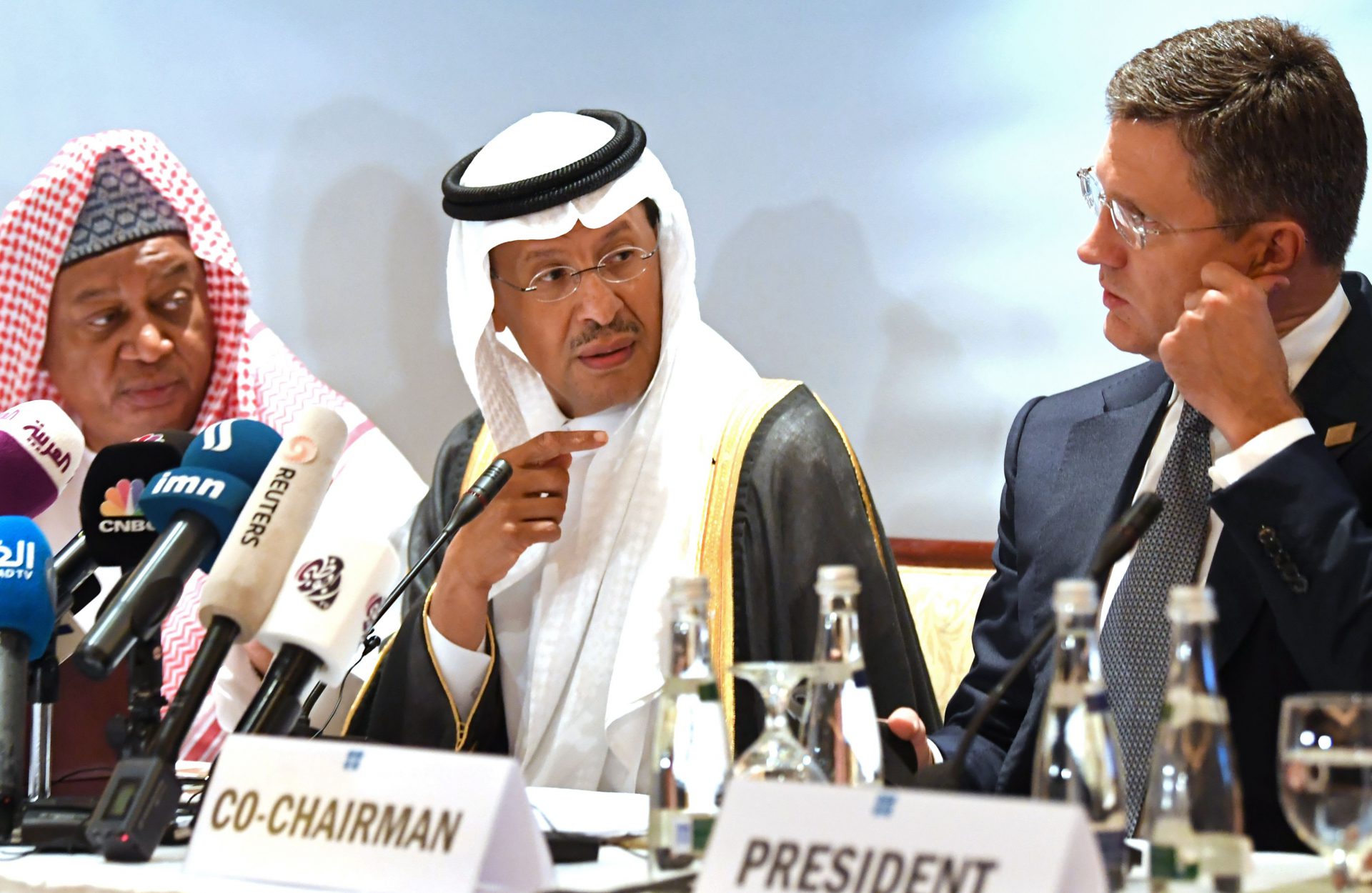In Grant Smith, Salma El Wardany and Javier Blas on 2/21/2021

click to enlarge
LONDON (Bloomberg) – Saudi Arabia and Russia are once again heading towards an OPEC + meeting on opposite sides of a crucial debate over the oil market.
Riyadh is publicly urging his fellow members to be “extremely cautious”, despite prices rebounding to the biggest increase in a year. In private, the kingdom signaled that it prefers the group to keep production stable, delegates said. Moscow, on the other hand, indicates that it still wants to continue with the increase in supply.
The positions reflect those taken at recent meetings, but this time the Saudis have a new bargaining chip – 1 million barrels a day of voluntary cuts. The kingdom promised to make these extra restrictions only in February and March, but some see signs that they may change as negotiations begin.
“The key question for me is how they return the Saudi barrels,” said Bill Farren-Price, director of research firm Enverus and a veteran observer of the cartel. The kingdom could potentially use them as “leverage to close a deal,” he said.
Currency trading
Ten months after cutting crude oil production when Covid-19 crushed global demand, the Organization of Petroleum Exporting Countries and its allies still retain 7 million barrels a day of the market, about 7% of global supply.
It was a sacrifice, with members like Iraq and Nigeria struggling economically as exports fell. But it produced results, reviving prices to more than $ 65 a barrel in London and sustaining producers’ impaired revenues.
By most estimates, the cuts meant that demand for oil exceeded production this year by a wide margin. The supply gap widened even more last week, as icy weather in Texas caused a drop in US production.
When OPEC + meets on March 4, it will discuss whether to supply more oil to the market in April. There will be two crucial decisions.
First, the group as a whole must choose whether to restore up to 500,000 barrels a day, the next step in a gradual resumption of production that was agreed in December but paused at the January meeting.
Second, Saudi Arabia must determine the fate of the 1 million extra barrels a day of extra voluntary cuts it is making this month and the next to help clear surplus stocks even more quickly.
The kingdom initially announced that this reduction would be reversed in April, but its most recent thinking is fluid and the next move has not been completed, delegates said. Offering to maintain part of this voluntary cut in April could give Riyadh a useful bargaining chip if it is trying to limit the increase in the group’s overall production.
“There is likely to be some loosening of production restrictions at the March meeting,” said Bob McNally, president of consultant Rapidan Energy Group and a former White House official. “The real negotiation has not yet started and no decision has been pre-prepared.”
Impending debate
Having diverged on the pace of increased supply in the past two ministerial meetings, public comments from Riyadh and Moscow indicate that another debate is approaching.
Russian Deputy Prime Minister Alexander Novak said on February 14 that “the market is balanced”. Although he did not publicly express a political preference for the March 4 discussions, Novak argued at the last two OPEC + meetings for increases in production.
Novak’s Saudi counterpart also appears to be sticking to a familiar position.
Recognizing that his position may be unpopular, Saudi Energy Minister Prince Abdulaziz bin Salman warned his fellow producers against complacency. The group must remember the “scars” of last year’s crisis and be “extremely cautious” in its next step, he said.
“The football match is still being played and it is too early to declare any victory against the virus,” said the prince. “The referee has not yet given the final whistle.”
Saudi gift
Both arguments have merit.
The 20% rise in oil prices this year was strong enough for large consumers, like India, to complain about the tightening, and for Wall Street banks and brokers to predict further gains.
Global stocks are falling “very fast” and are expected to decline dramatically later this year, according to the International Energy Agency. The demand for oil products that serve societies that work and consume at home is growing.
After freezing storms in Texas interrupted up to 40% of U.S. oil production last week, the clamor for barrels from refineries in some regions has gotten stronger. There is also a risk for OPEC + that once climate-related disruptions in the center of the shale subside, high prices will trigger a new flood of supply.
But at the same time, inventories remain significantly above average levels and the IEA’s projections may accumulate again in the next quarter. The supply disruption due to the US freeze will not last long enough to cause a shortage, according to OPEC + delegates, who asked not to be identified because the information is not public.
Even after the hike, prices are still below the levels that most OPEC members need to cover government spending, giving Riyadh an extra edge.
“The elephant in the room is Saudi Arabia’s gift of 1 million barrels a day in extra cuts,” said Bjornar Tonhuagen, an analyst at consultancy Rystad Energy AS. “If the gift is snatched, prices can do nothing but fall.”
